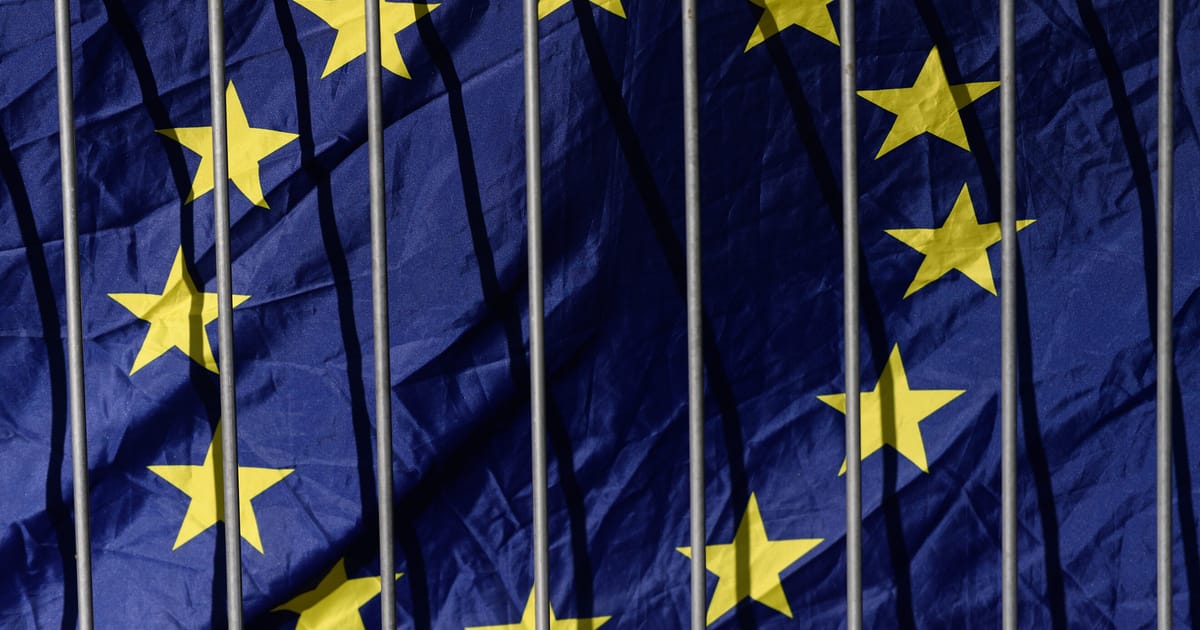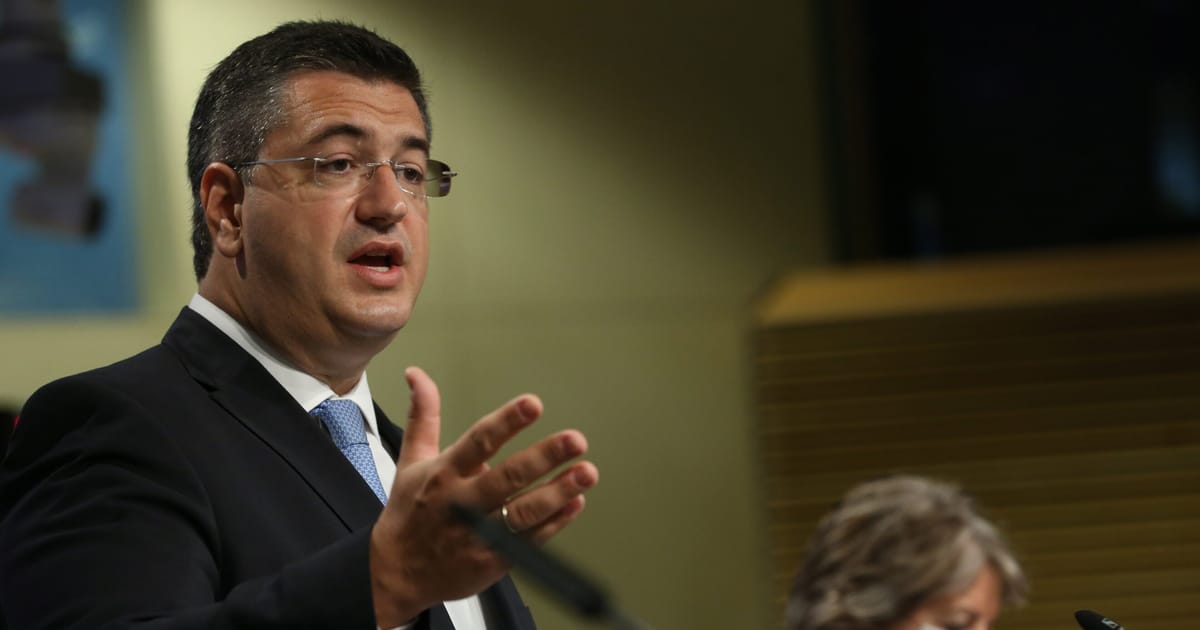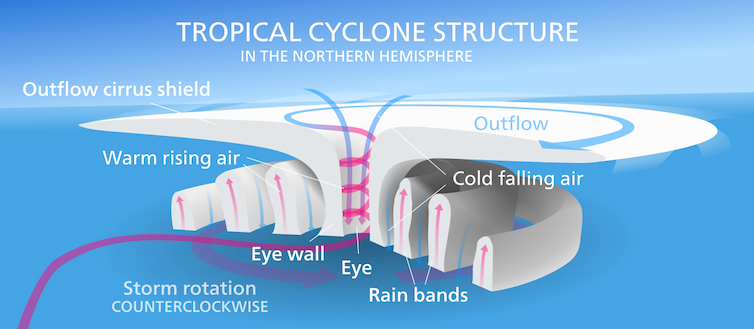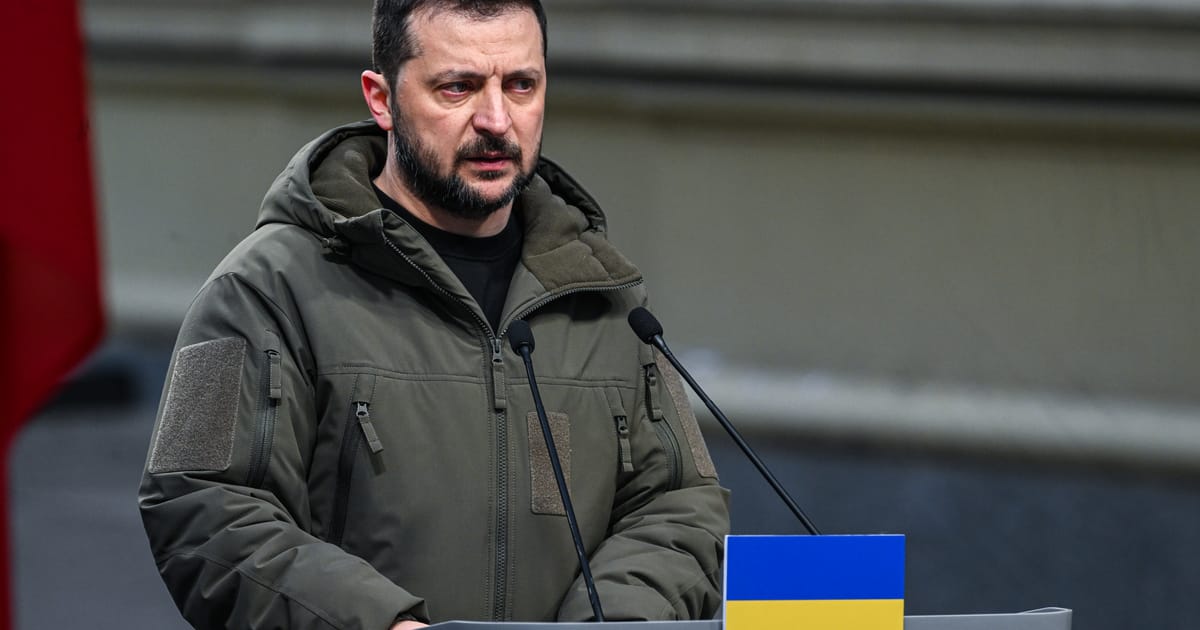Press play to listen to this article
Voiced by artificial intelligence.
For several hours on Thursday, the only show in town was Volodymyr Zelenskyy. Then the Ukrainian leader left. And a well-worn clash over migration instantly returned.
Well into the early hours of Friday morning, EU leaders made proposal after proposal, all seeking to stem the rise in people arriving outside legal channels to the Continent. Some wanted Brussels to help pay for border fences. Others stressed a focus on returning rejected asylum seekers.
German Chancellor Olaf Scholz at one point tried to calm passions, according to one official familiar with the discussion. Did the EU want to turn itself into a fortress? Walls, simply put, do not work, he said, pointing to the U.S.-Mexico border, where a fractious debate over a wall hasn’t abated crossings.
Ultimately, however, Scholz and the other EU leaders did back more stringent EU border control methods — an indication of how the EU has shifted right on the subject since the apex of the 2015-2016 Syrian refugee crisis.
Border fences, especially, were once anathema in much of Europe, treated as an unwelcome, Trumpian solution — a blunt instrument meant more for show than practical use. But a growing coalition of EU countries has now built such barriers, with some wanting Brussels to help pay for more. And while EU officials won’t cross the red line into fence funding, they usually agree to fund surveillance technology and border guards.
“Borders must be managed,” European Commission President Ursula von der Leyen said at her early Friday press conference. “We will act to strengthen our external borders.”
As EU leaders went round and round, Austria led the pack in pushing for more border resources from Brussels.
The country has experienced an increase in migrants arriving through the Western Balkans, often crossing from Serbia into Hungary and then into Austria.
At Thursday’s summit, the country got its preferred language into the final statement, which implores the Commission “to immediately mobilise substantial EU funds and means” to help countries bolster their “border protection capabilities and infrastructure.” The statement specifically referenced “surveillance, including aerial surveillance, and equipment.”
After the leaders broke up around 3 a.m., Austrian Chancellor Karl Nehammer lauded the result, which may be the EU’s strongest language yet on the issue.
“The EU Commission has now agreed to provide substantial support,” he said, noting this means an EU border country like Bulgaria can now use Brussels money for border personnel and vehicles, then use its own money “to strengthen the border fence.”
In Nehammer’s telling, this means the EU is de facto paying for border fences, even if it says it’s not.
Bulgaria has been a particular focus for Austria. It wants the EU to help reinforce a fence between the EU border country and Turkey, a project it pegs at €2 billion. But the Commission has cautioned that it only has €3 billion left for all fence-related projects, according to multiple diplomats.
Austria was not the only country stumping for more border funding. A clutch of countries including Hungary, Denmark, Estonia, Lithuania, Latvia and Greece signed a letter backing tougher border measures on the eve of the summit. The missive echoed a similar letter from October 2021 that saw 12 member states asking the European Commission to let EU cash go toward border barriers.
Von der Leyen, who opposes the EU entering the fence-funding business, said after the meeting that leaders had only agreed to use EU money for infrastructure like cameras, watch towers and vehicles.
She even made a point of mentioning that an existing fence the EU was looking to rehab “doesn’t function” since it doesn’t have adequate personnel and surveillance equipment. The effort is part of a series of “pilot projects” von der Leyen said the EU would launch to illustrate, among other things, how an ideal border would process asylum seekers.
“The focus is on having a functioning border [so] that we know if somebody comes to the border there is a procedure that should be the same all over the European external borders,” she said.
Wilhelmine Preussen contributed reporting.




